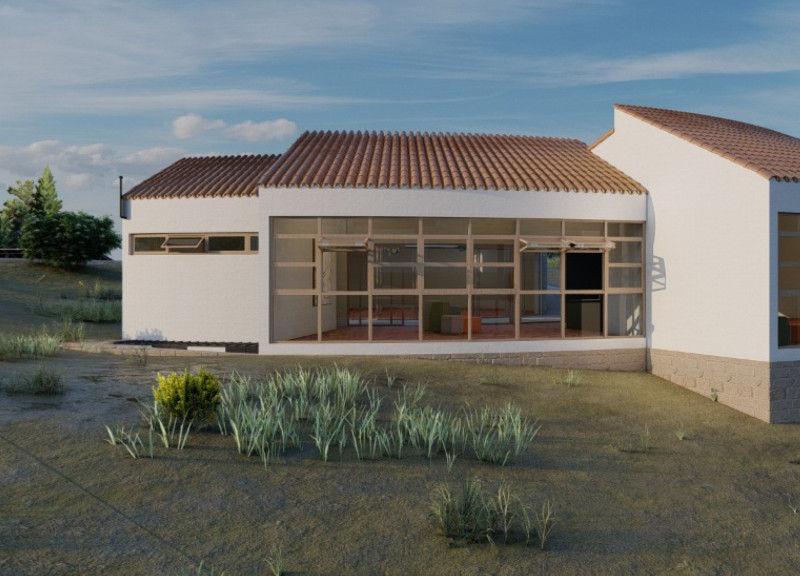5 key facts about this project
The design draws inspiration from the Fibonacci sequence, which is known for its spiral shape that represents growth and connection. Situated in the Spirala community, the building aims to harmonize with the surrounding landscape while promoting community interaction. The main goal is to create spaces that invite people in, blending the indoors with the outdoors and echoing local history within a contemporary framework.
Design Concept
The approach focuses on connecting architecture to nature. The design ensures that the building complements its setting without overwhelming it. The layout encourages movement between various areas, fostering a sense of community and social interaction. Open spaces are created for gatherings and activities, enhancing the communal atmosphere.
Materiality
Materials play a key role in the overall design. A stone foundation supports the structure, while white plastered walls give it a clean appearance. Ceramic tiles are used for flooring and roofing, paired with iron and wood frames. These choices reflect local construction traditions and allow the building to relate to its environment effectively.
Spatial Configuration
The building's layout includes large, open spaces that can serve different purposes, whether used separately or together. External areas connect to the landscape, allowing for smooth interaction between indoor and outdoor settings. This design invites people to engage with both the building and nature, promoting an inclusive environment.
Sustainability Features
Sustainability is a priority throughout the project. Natural light and air are maximized through skylights and well-placed openings, which reduce the need for artificial lighting. Solar panels provide energy, and the design includes a rainwater collection system, utilizing water from a green roof for maintenance.
Furniture is designed to be flexible and easy to move, allowing the spaces to adapt to various activities. Transparency in design encourages a connection to the landscape outside, reinforcing the themes of growth and community that underpin the project.





















































